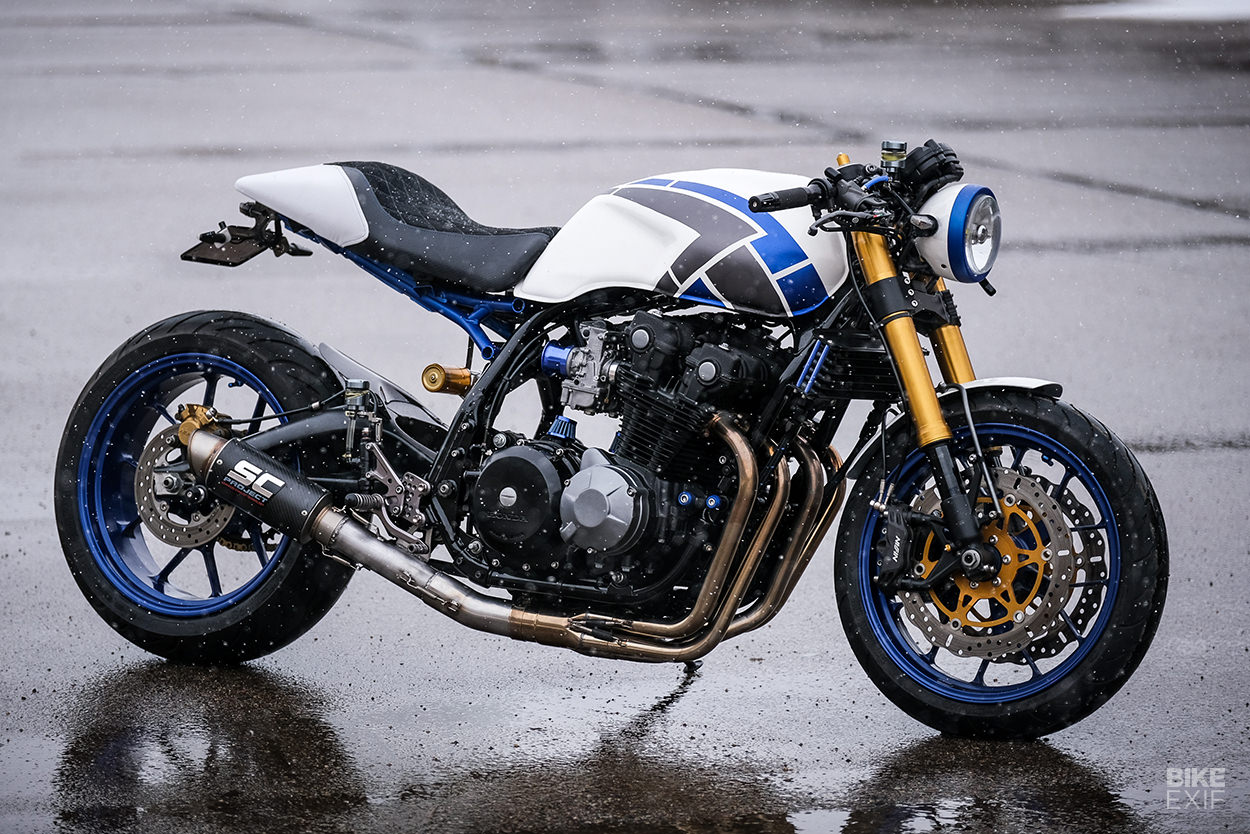
Unless you can identify a motorcycle just by its engine, you’ll have a hard time pinning down the exact year and model of this muscular Honda four. We’ll clue you in: it’s a 1981 CB900F. But it’s wearing parts from so many different donors, it’s hardly recognizable.
Calling it a ‘bitsa’ would be highly unfair though. That’s because owner and builder James Berreau has done such a good job of piecing it together, it looks almost stock—like some forgotten naked bruiser of the 90s.
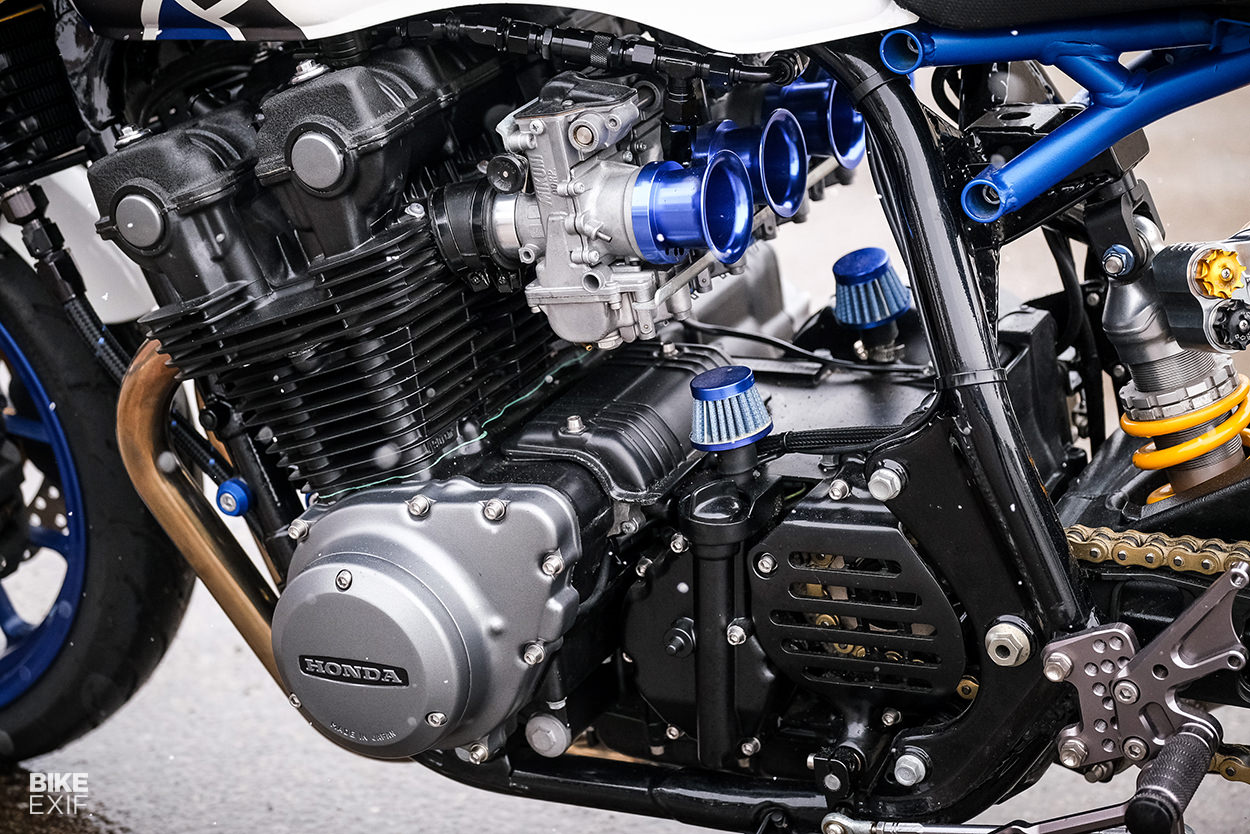
James is based in Minneapolis, where he works as an R&D test technician for a global corporation. But he’s also got six years experience as a US Air Force aircraft tech.
He works out of his garage with little more than a bike lift, TIG welder, and his granddad’s WWII-era lathe on hand. And short of a few suspension and wheel swaps, the CB900F is his first full custom motorcycle build.
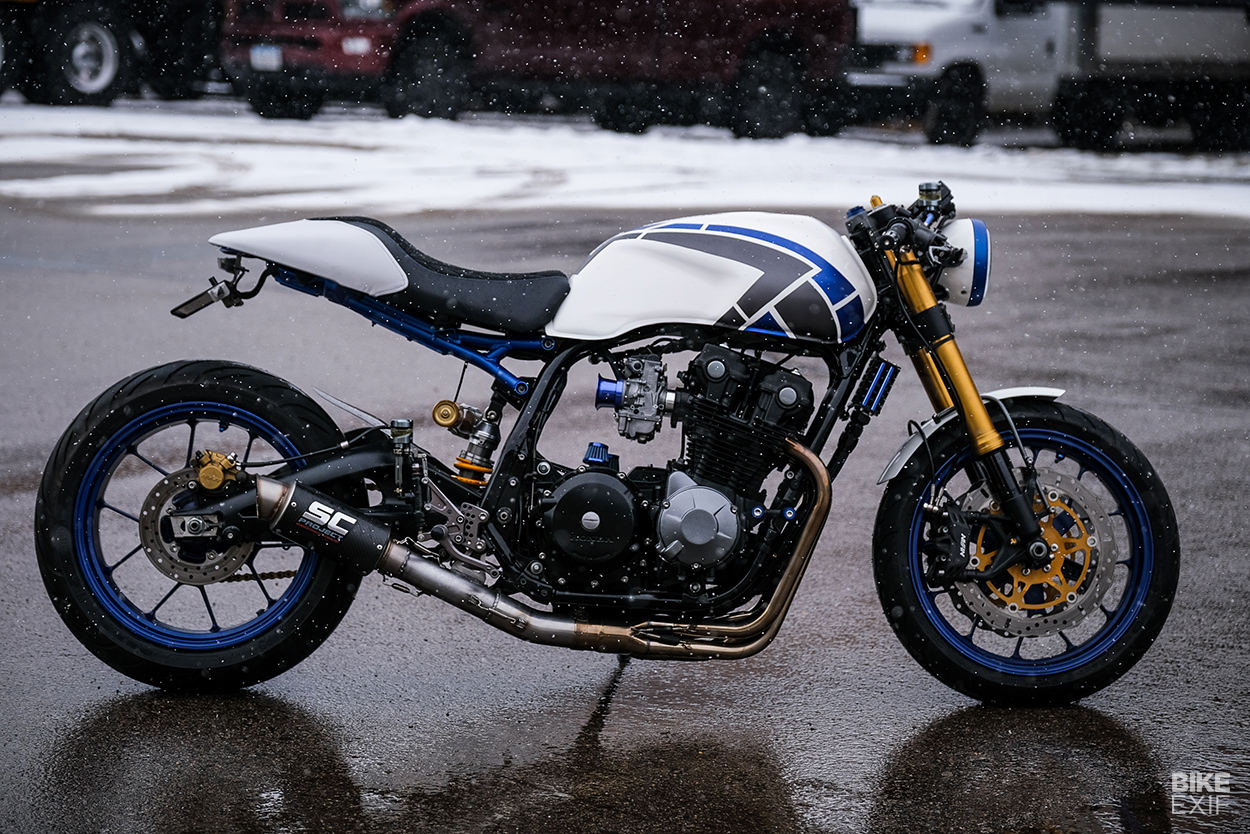
James tells us he pulled inspiration from another CB900F, built by Rob and Chris Chappell. But James’ CB, dubbed ‘Tokyo Nights,’ is an entirely different animal. What was supposed to be a “simple cafe build with just a single shock conversion,” soon snowballed into something far more comprehensive.
This CB900F now wears a set of Showa upside-down forks, borrowed from a Kawasaki ZX-10R. They’re held by a set of Ergal triples, designed for the CBR1000RR and modified to fit. James didn’t like the look of the top yoke, so he shaved the ignition bracket off, and milled in some cutouts for aesthetic purposes.
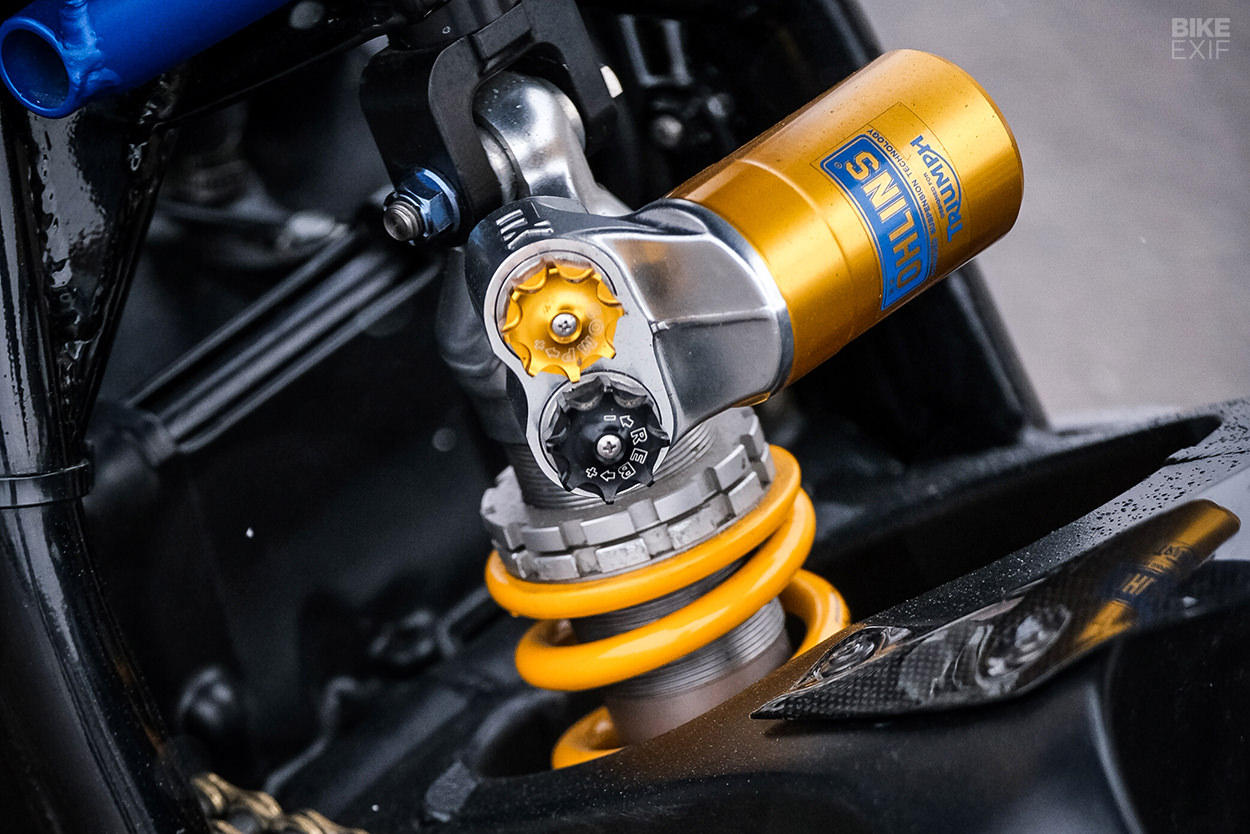
Out back is the swingarm from a 2014 Triumph Daytona 675R, hooked up to a top-shelf Öhlins TTX shock via an adjustable linkage. The wheels are Aprilia RSV units.
The CB’s new brake system is a true pick-n-mix affair. The rear rotor and caliper are from the Daytona 675R, operated by a Nissin master cylinder. The front features EBC rotors with custom spacers, the Nissin calipers from a Kawasaki ZX-14, and a Brembo master cylinder.
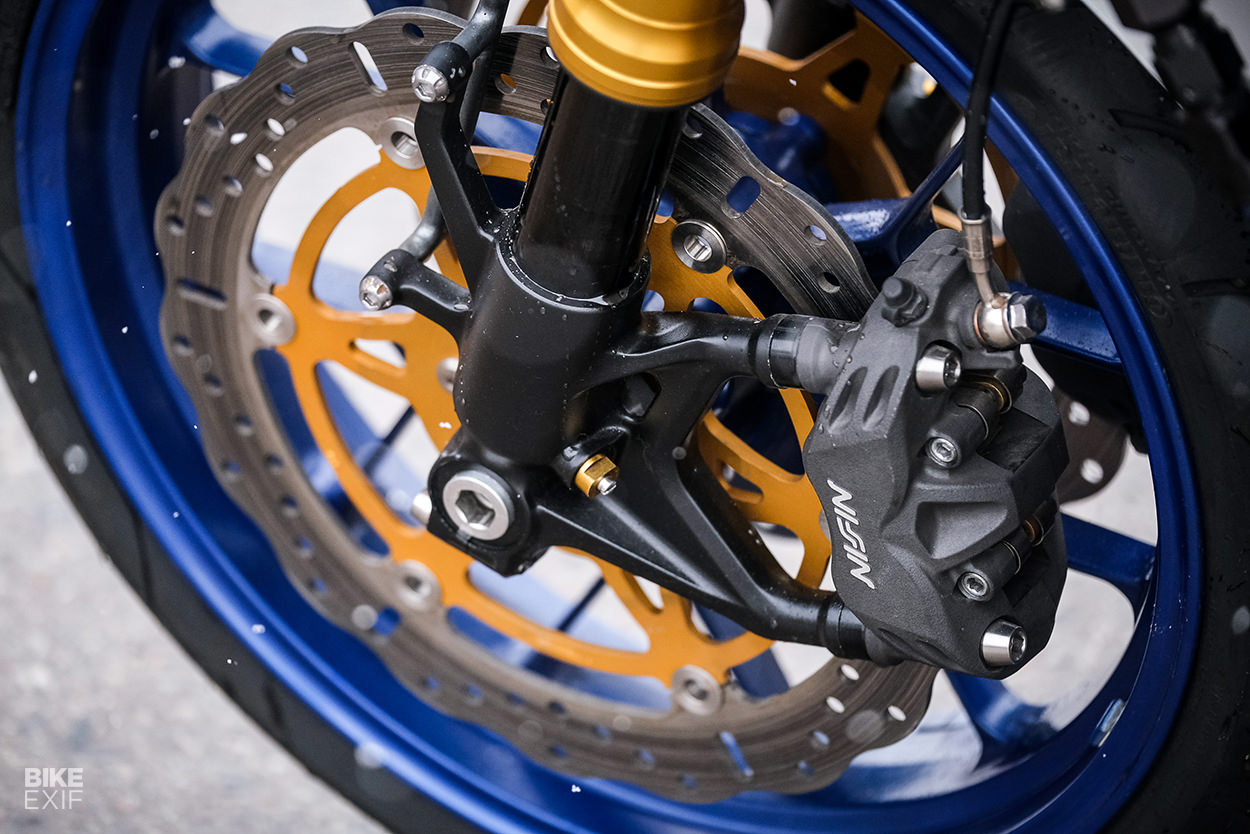
Titanium bolts and braided brake lines were used throughout the entire system. Up top, James installed a Brembo clutch perch to match the brake control, attached to clip-ons he cut from a set of drag bars.
The modern speedo is a generic eBay find, and the grips, turn signals and reservoirs are from Rizoma.
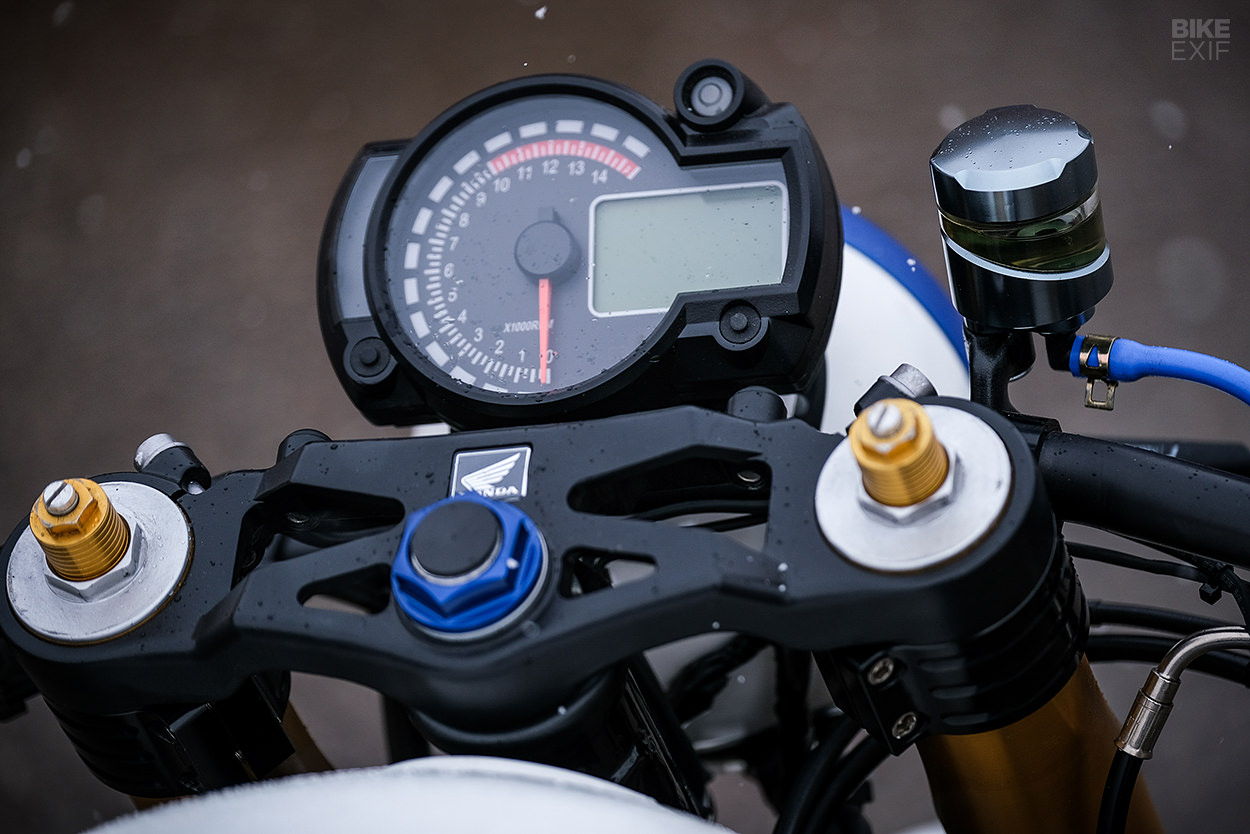
There’s just as much matchmaking going on with the bodywork. James took the top shell of a 1990 CB400F fuel tank, and mated it to the bottom half of a stock CB900F unit. But after brazing about three quarters of it together, he ended up with a one-inch gap near the rear section—so he heated it up and hammered it into place.
If the rear section looks familiar, that’s because the entire subframe and seat unit are from a 2012 Ducati Monster. James bolted it to new mounts that he fabricated himself, then trimmed two inches out of the back and re-contoured the seat up front. Luimoto handled the upholstery, but left the front unstitched on request, so that James could tweak it to flow neatly into the tank.
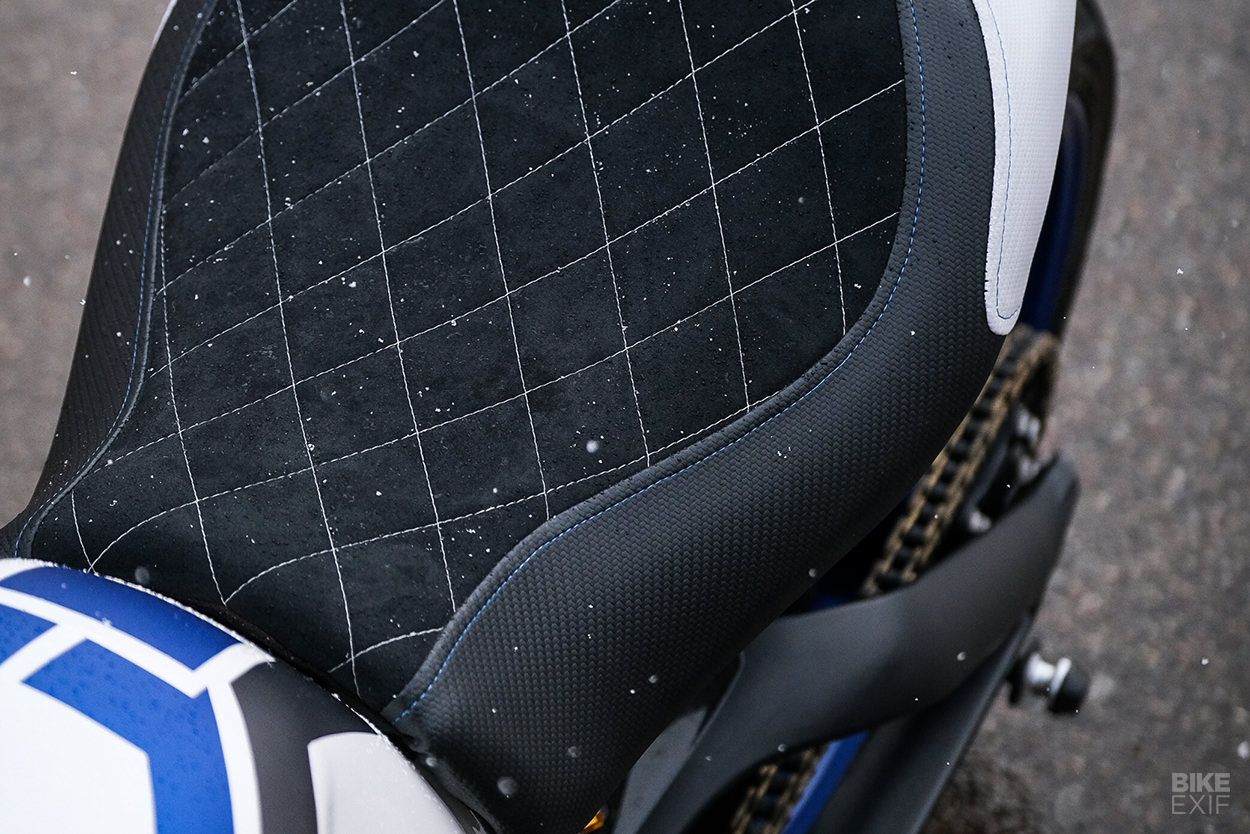
There’s a lot of hidden work on the Honda’s frame, including the new shock mounts, and cross-members to strengthen it. James also handmade a ton of smaller bits, like the mount for the headlight and speedo, and the front fender braces.
He tore into the motor too, and he went deep. The work done could fill volumes, but highlights include one-millimeter-over pistons, custom head porting, and a lightened and balanced crankshaft, courtesy of the team at APE Racing in California. James also installed Forseti Racing cam chains, and installed a Yamaha R6 starter sprag clutch conversion.

Other upgrades include Mikuni carbs running through velocity stacks, and a new wiring harness built around a Motogadget m.unit. James also did a permanent magnet conversion, using a rotor and stator from a CBR600RR. The alternator cover is a blend of both the CB and CBR units, and the front sprocket cover’s a custom affair too.
A four-into-one exhaust system terminates in a stubby aftermarket muffler, which probably sounds bananas.
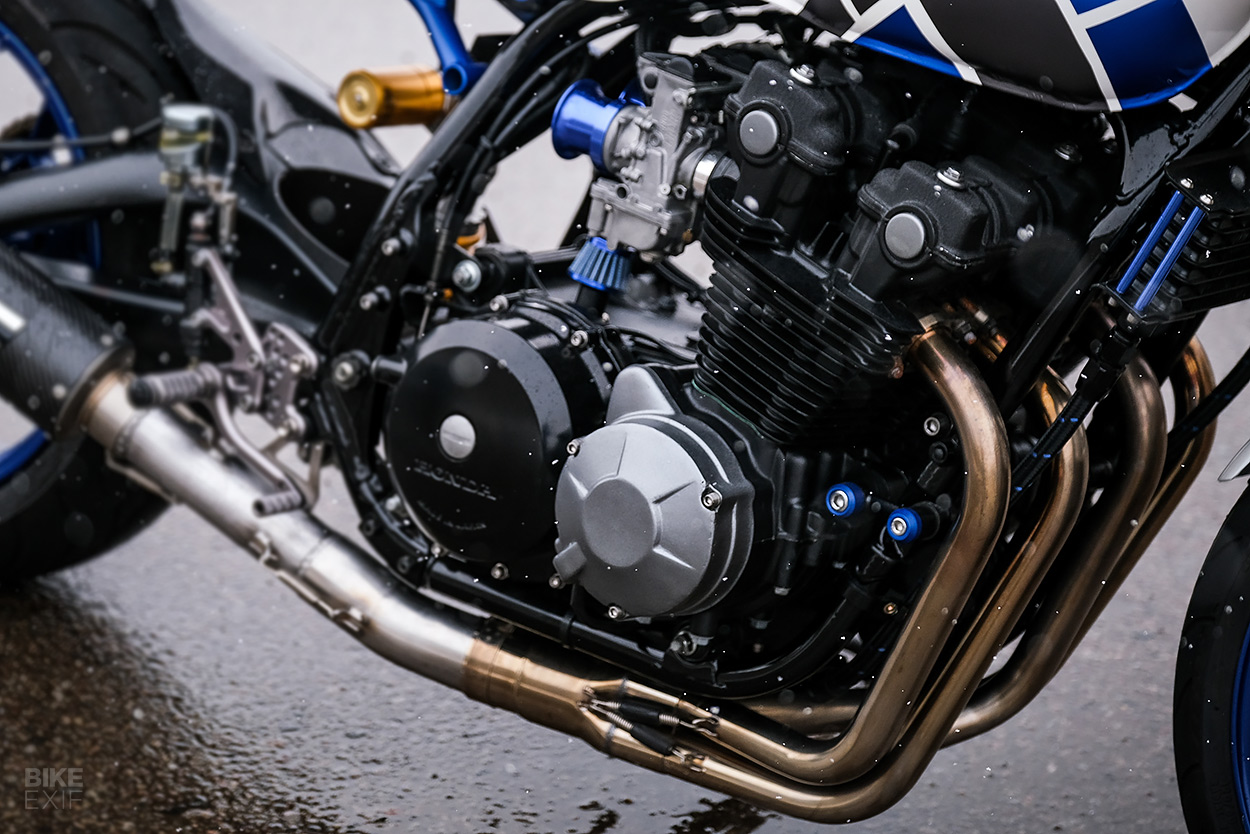
There are stainless steel cap screws everywhere, all machined down into tapered heads. The rest of the fasteners are titanium, the fuel and oil fittings are all AN numbers, and there’s even a dry-break connector for the fuel line.
James reckon’s he made a useful weight saving over the original CB900F. Add to that improved handling and a motor that’s happy to rev up, and you’ve got a modernized big four with aggressive looks and performance.
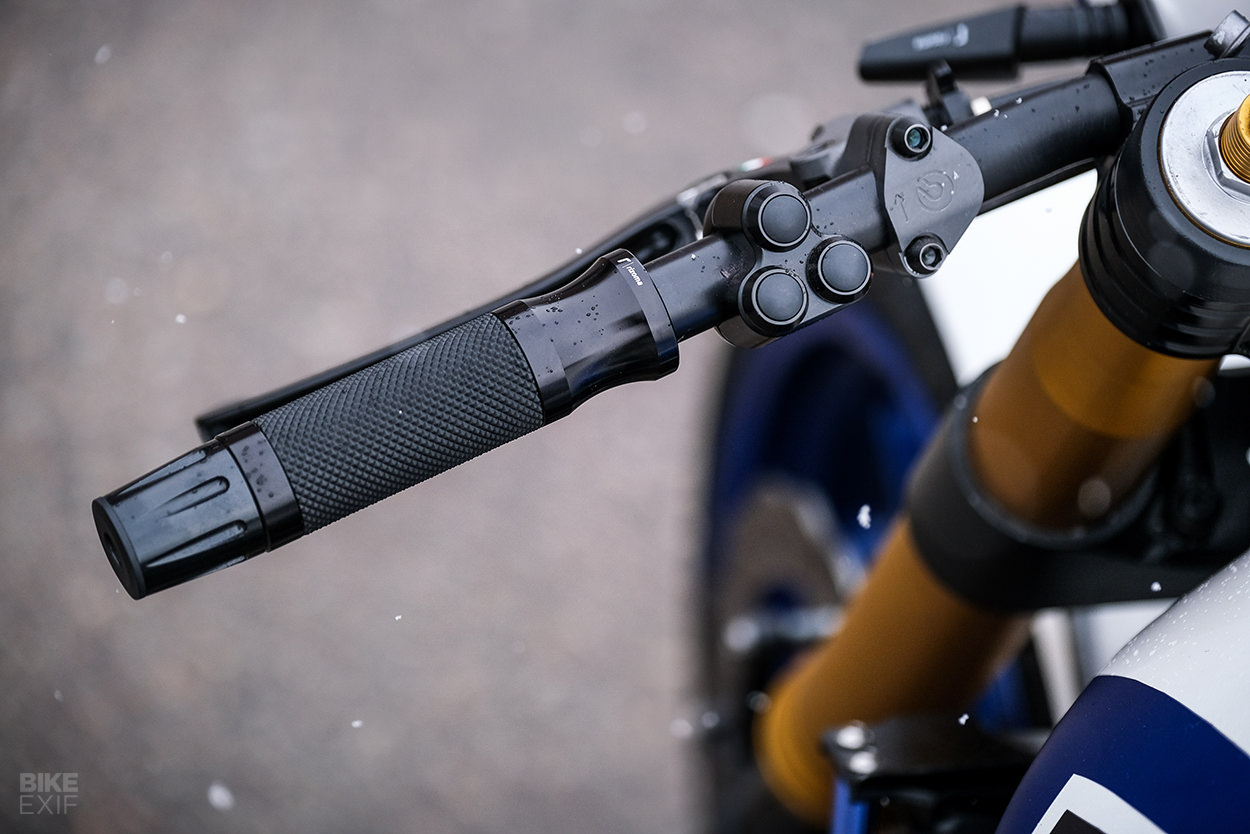
That puts it right up our alley. This might be James’ first full build, but we’re hoping it isn’t his last.
James Berreau Instagram | Images by (and with thanks to) Sam Bendall
